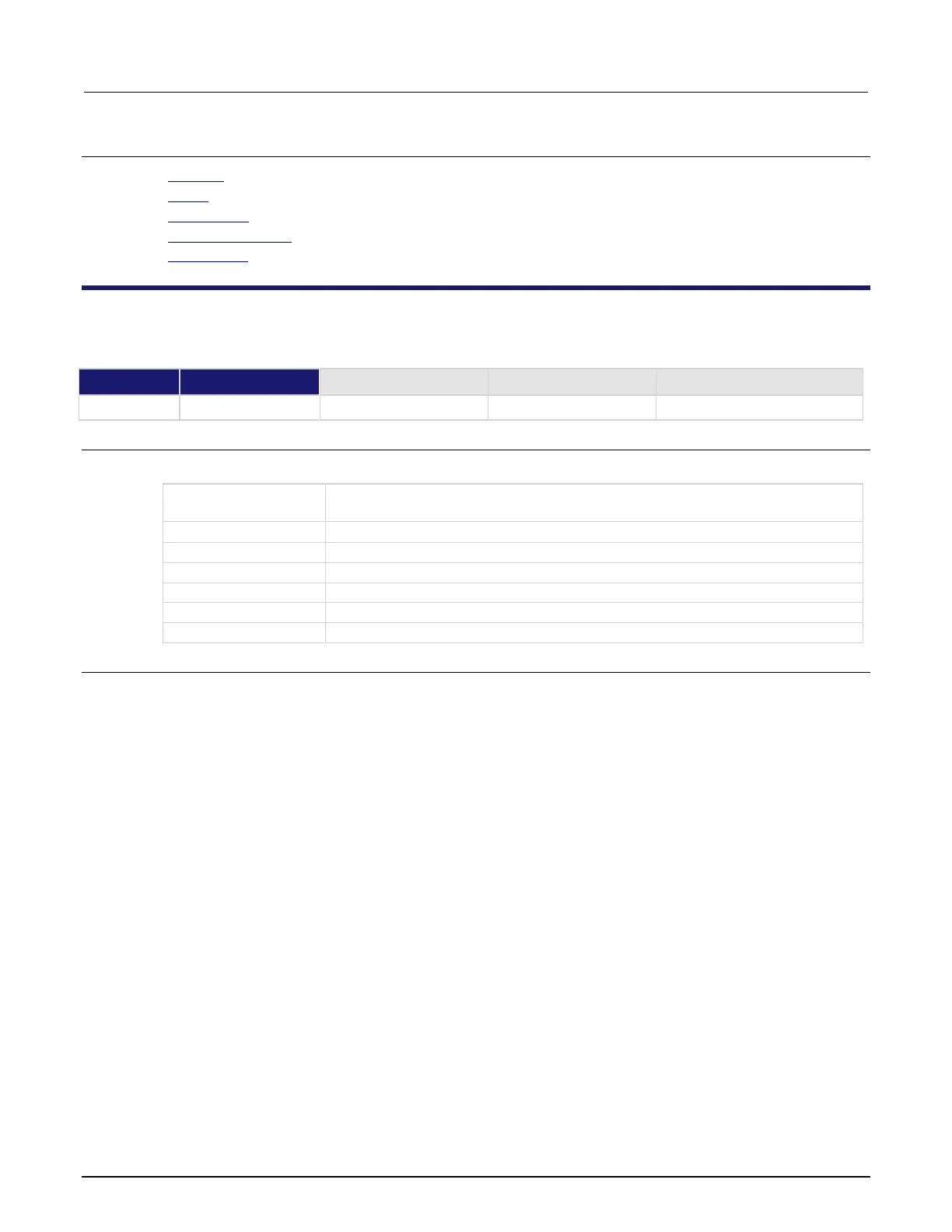Series 2600B System SourceMeter® instrument Reference Manual Section 9: TSP command reference
2600BS-901-01 Rev. F/August 2021 9-219
Also see
Autozero (on page 2-8)
reset() (on page 9-177)
setup.recall() (on page 9-197)
smuX.measure.nplc (on page 9-228)
smuX.reset() (on page 9-236)
smuX.measure.calibrateY()
This function generates and activates new measurement calibration constants.
Usage
smuX.measure.calibrateY(range, cp1Measured, cp1Reference, cp2Measured, cp2Reference)
Source-measure unit (SMU) channel (for example, smua.measure.calibratev()
applies to SMU channel A)
SMU measurement function (v = voltage, i = current)
The measurement range to adjust
The value measured by this SMU for point 1
The reference measurement for point 1 as measured externally
The value measured by this SMU for point 2
The reference measurement for point 2 as measured externally
Details
This function generates and activates new calibration constants for the given range.
The positive and negative polarities of the instrument must be adjusted separately. Use a positive
value for the range parameter to adjust the positive polarity and a negative value for the range
parameter to adjust the negative polarity.
All four measurements (cp1Measured, cp1Reference, cp2Measured, and cp2Reference) must
be made with the calibration set that is active. Corruption of the calibration constants may result if this
is ignored.
The new calibration constants are activated immediately but they are not written to nonvolatile
memory. Use the smuX.cal.save() function to save the new constants to nonvolatile memory. The
active calibration constants stay in effect until the instrument is power cycled or a calibration set is
loaded from nonvolatile memory with the smuX.cal.restore() function.
This function is only available when calibration is unlocked using smuX.cal.unlock().

